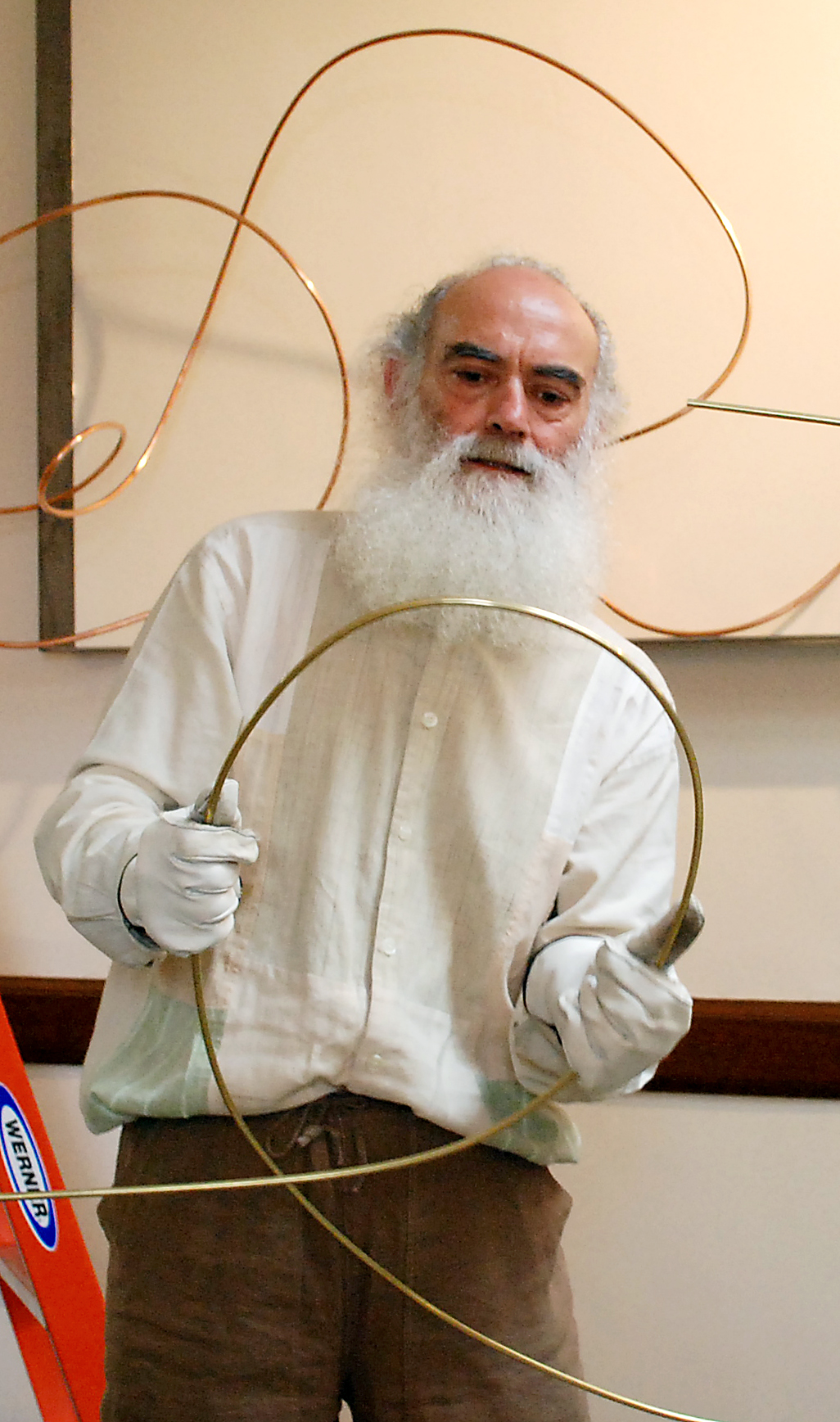Prominent contemporary Italian artist Pietro Coletta has molded his way into the heart of UCLA’s Department of Italian with a new sculpture.
Last Friday, Coletta created the installation in the Italian department’s entranceway at 340 Royce Hall, adding to the department’s collection of world-class Italian art.
The newly donated piece, titled in Italian “Essenza del volo | volo dell’essenza,” or “Essence of Flight | Flight of Essence,” is composed of a creased copper sheet, saturated in a spectrum of colors created by fire and accentuated in light. The copper sheet is additionally cast onto 60 feet of spiraling brass iron that Coletta physically bent and shaped throughout the morning.
The spiraling iron wire is meant to evoke movement and the breath of the soul. The circle is symbolic of cosmic movement and the infinity, Coletta said.
Coletta’s sculpture will be the fifth major piece of art that has been donated to UCLA under the provision of the Italian department.
Luigi Ballerini, a professor of Italian studies, headed the project and has supervised visiting artists to the department since early this year. Ballerini said he wanted to create a special environment for the Italian department, not an expected one.
“When you go into a foreign language department, what do you expect to see on the walls? The Tower of Pisa? Venice with gondolas? Enough of those images we’ve seen before; let’s have an art gallery,” Ballerini added.
Contrasting traditional images of Italy, Coletta’s sculpture is not exclusive to Italian identity. Coletta instead focuses on universalism and global conversation.
“Physically, we’re one person. But then there is the invisible part, the soul. We’re talking right now because our souls are animating us like cartoons,” Coletta said.
Inspired by periodic travels to India and Africa, Coletta said he builds his sculptures as a form of meditation.
“Art is a way to get in touch with the divine that is inside us. It is a lived experience,” he said.
According to a statement by the Italian department, Coletta’s universal sensibility and careful use of raw materials has gained him prominent recognition in the art world.
“(In Coletta’s work), metal seems to free itself from gravity and float upwards … separating itself from any sort of ballast,” Luigi Sansone, a Milan art critic, wrote in a catalog of Coletta’s work produced by UCLA for the sculpture.
From the theme of transnational connection and freedom, Coletta also focuses on the idea of balance. He frequently uses brass, iron and copper to illustrate his concept.
Brass contains a little bit of copper, so the materials themselves present a duality. In duality, there is wholeness, Coletta explained. In dualities, Coletta said, he additionally attempts to distinguish the cultural separation between the East and the West, using his work as a reminder of the universal presence of the soul that the West tends to forget.
“From a poetic point of view, it’s a spiritual work. It’s a flight of our soul in our free life,” Coletta said.
Amid the youth and ambition at UCLA, Coletta added he thinks the sculpture is appropriately placed on campus to symbolize the flight of freedom for students under their own personal paths and interpretations.
